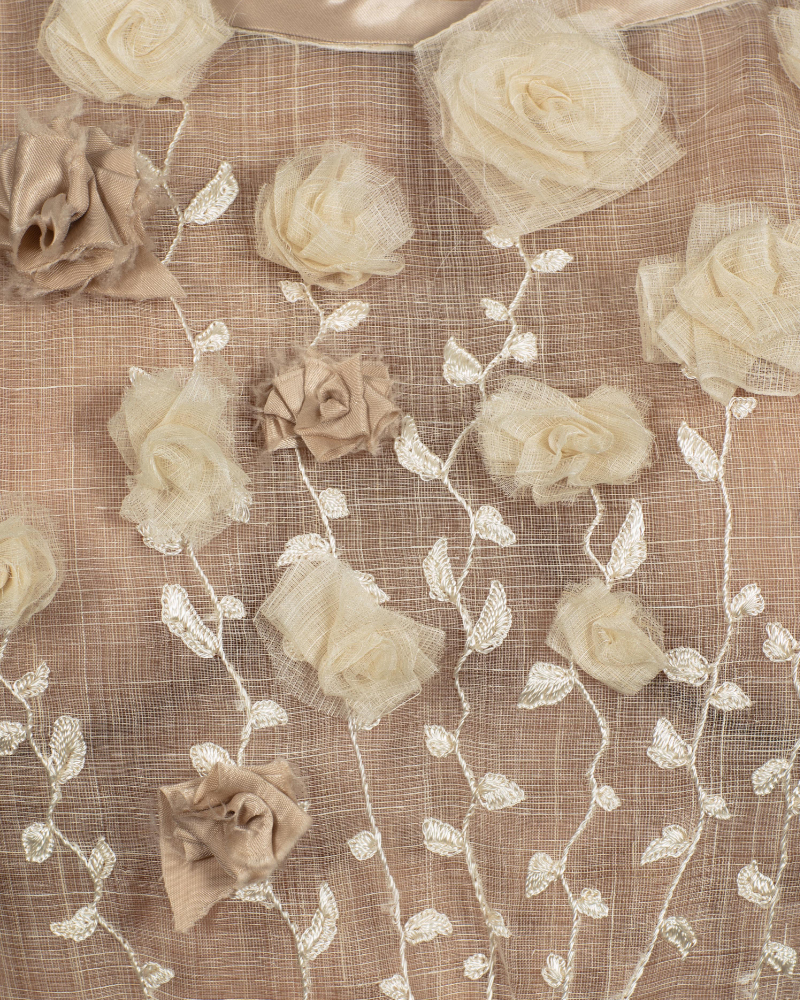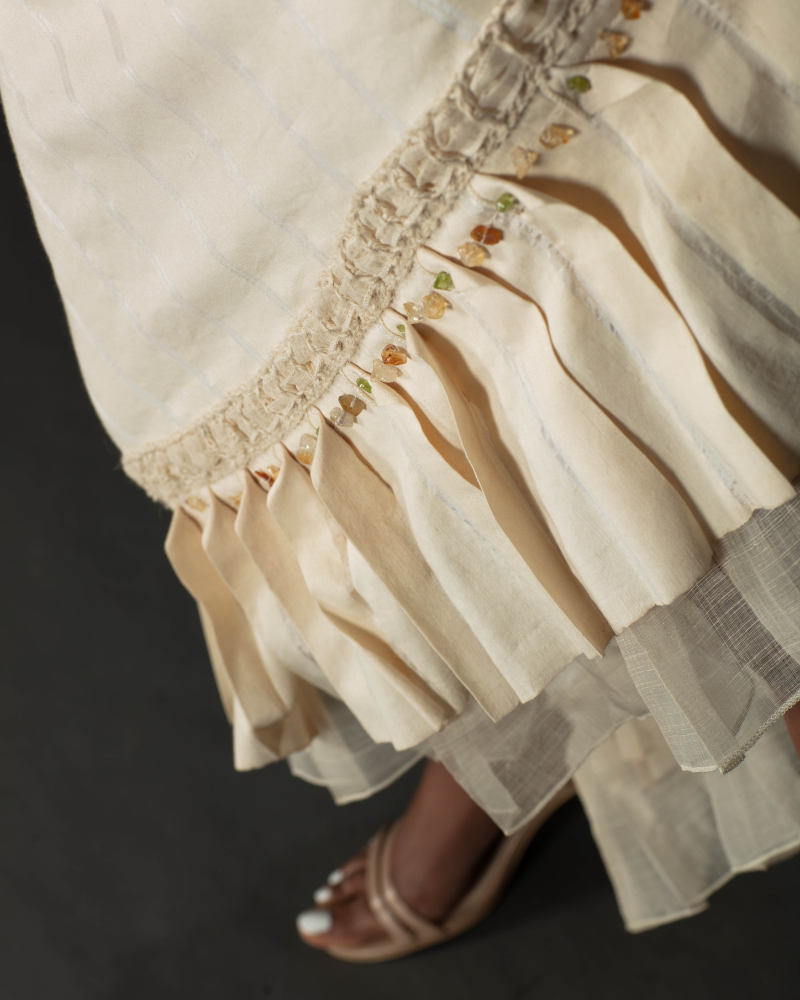I first started using Pina cloth in 2008, making underwear, due to the expensive cost of such fine fabric. I found the cloth to be amazingly comfortable, light and airy, & softened with wash and wear. In 2010 I held an exhibition at James Cook University, Cairns, QLD, showcasing alternate, sustainable, eco-friendly options in fabric. By 2021 I had two hand made gowns of pineapple fiber on the catwalks of London SS22.
Piña is a pineapple fiber made from the leaves of a pineapple plant and is commonly processed in the Philippines. Piña’s name comes from the Spanish word piña which literally means pineapple. Pina weaving is an age-old tradition dating back to Hispanic times. Pina clothes were said to have reached Greece and African countries many centuries ago. During the 19th century, pina fabric was much in demand, not only in the Philippines but worldwide.
It is said to have been cultivated from the Spanish Invasion of the Philippines back in the 15th Century, not impressed with the “Nakedness” of the indigenous people of the land. In the 16th and 17th centuries, weaving this fine fabric flourished and by the 18th century, Kalibo was acknowledged as the center of the piña weaving industry. So highly prized was piña that it was given as gifts to kings and other royalty of Europe or used to pay royal tribute or poll tax in 1571. It is said that if one visits the Victoria and Albert Museum in London, one can see the piña handkerchief that was presented to Queen Alexandra as a wedding gift in 1862.
The leaves are hand stripped, to reveal gossamer-thin fibers that are carefully washed and painstakingly hand-knotted to create longer filaments for weaving. The weaving of piña threads is an equally lengthy process thanks to the almost microscopic width of the fibers; in fact, the warping of a sixty meter length of fabric alone can take up to twenty days. Weaving must be accomplished through the use of old looms with foot operated treadles as these delicate fibers cannot withstand most modern machine operated looms.

After the fibers have been extracted they are left out in the sunlight to dry, they are then waxed to straighten out the fibers. Because of the waxing process and the fact Pina has a natural gloss, no chemical finishes need to be applied to the fabrics to give them their characteristic luster. This means that Pina fabric is completely environmentally friendly. Being such a very time consuming, laborious process, this fabric is very expensive and rare.







